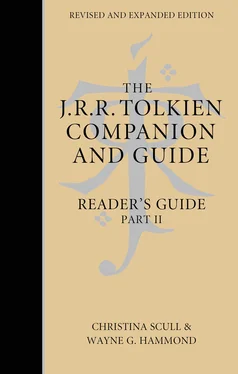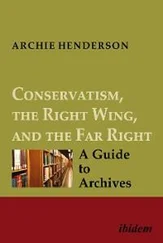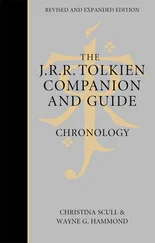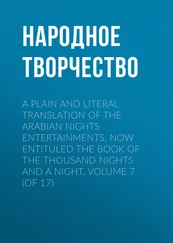Before starting work on the Akallabêth Tolkien made an outline history of Númenor with rough dates for the thirteen kings (most not named) who followed after the death of Elros in Second Age 460, and for some significant events (e.g. the fourteenth and last king, Tarkalion or Arpharazôn, challenges Sauron in Second Age 3125, and the Downfall of Númenor takes place in 3319). The first text, a manuscript, is addressed to Ælfwine, presumably by Pengoloð, an Elf of Tol Eressëa, and begins with two new paragraphs summarizing the Elvish tradition of the coming of Men into the world, their falling under the dominion of Morgoth, the repentance of the Edain who fought with the Eldar against Morgoth, and the voyage of Eärendil into the West to speak to the Valar on behalf of Elves and Men. The text then briefly follows the third version of The Fall of Númenor for an account of the defeat of Morgoth, the summoning of the Elves into the West to the Isle of Eressëa whose haven was Avallónë, and the creation of Númenor for Men.
From that point the Akallabêth follows mainly The Drowning of Anadûnê , but takes or revises some passages from The Fall of Númenor . The language spoken by most of the Númenóreans is still Adûnaic, but most names are in the Elvish languages (*Languages, Invented), either that which their kings and lords had learned during their alliance with the Elves (here called Noldorin) or the High Eldarin tongue (Quenya) which their lore-masters learn. The Númenóreans are forbidden by the Valar to sail west out of sight of the shores of Númenor, but they know that Eressëa lies to the west, and beyond that is the Blessed Realm. The Eldar from Eressëa visit and bring gifts, including a seedling of the White Tree of Eressëa, itself a seedling of Telperion, one of the Two Trees of Valinor. The seedling is planted in the courts of the king. The Númenórean mariners again see the Gates of Morning in the East. The Númenóreans’ resentment of their mortality begins earlier, and it is to Tar-Atanamir, the seventh king, that the Valar send messengers, who now say nothing about the shape of the world but tell him that even if he came to Aman it would not profit him. ‘For it is not the land of Manwë that makes its people deathless, but the Deathless that dwell therein have hallowed the land; and there you would but wither and grow weary the sooner’ ( The Silmarillion , p. 264).
More detail is given of the growing obsession of the Númenóreans with death, building great tombs, and seeking to prolong life, but discovering only how to preserve bodies of the dead. Most cease to show any devotion to Eru. Even before Sauron comes to power, they make settlements in Middle-earth, mainly in the south, and instead of teaching and helping those living there, they seek wealth and dominion. The Faithful sail mainly to the North-west, establish a haven at Pelargir, and help Gil-galad against Sauron. Some of this, and much else of the added material, derived from The Lord of the Rings . In the Akallabêth it is during the reign of Tar-Atanamir that Sauron completes the building of Barad-dûr and begins his campaign for domination of Middle-earth. He is said to hate the Númenóreans because they aided Gil-galad against him. Three of the nine Men whom Sauron snares with rings are great lords of Númenórean race, and he uses them (the Ringwraiths) to attack Númenórean strongholds by the sea. When he comes to Númenor, Sauron urges the king to cut down the White Tree growing in his courts, but before the king consents, Isildur manages to steal a fruit, and the sapling grown from this fruit and the Seven Stones given to them by the Eldar are included in the treasure the Faithful put aboard their ships (cf. the rhyme in The Lord of the Rings , bk. III, ch. 11). Sauron says nothing about the shape of the world except that many lands lie east and west. As in The Fall of Númenor , when the fashion of the world is changed Aman is not destroyed, and Aman and Eressëa are ‘taken away and removed from the circles of the world beyond the reach of Men for ever’ (* The Peoples of Middle-earth , p. 157). Although it is not stated in the account of the actual Downfall in what way the fashion of the world is changed, other than that new lands and seas are made, it is implied in the later statement ‘in after days, what by the voyages of ships, what by lore and star-craft, the kings of Men knew that the world was indeed made round, and yet the Eldar were permitted still to depart and to come to the Ancient West and to Avallónë, if they would. Therefore the loremasters of Men said that a Straight Road must still be, for those that were permitted to find it’ ( The Silmarillion , p. 281).
Probably in 1951 Tolkien took up a typescript he had made from the manuscript of the Akallabêth and emended it, altering some names and the sequence of certain events, rewriting a few passages, and adding a lengthy rider giving much more detail of the history of the last Númenórean kings, and in particular their growing hostility to the Eldar and the Valar and to those who remained faithful. The White Tree is no longer a descendant of Telperion, but of a memorial of that tree given to the Elves of Túna. Messengers from the Valar still come to Tar-Atanamir, but he is now the thirteenth king. The nineteenth king chooses a name in Adûnaic rather than in the Elven-tongue – Adûnakhor, Lord of the West – a title belonging to the Valar, and forbids the use of the Elven-tongues in his hearing. Emphasis is laid the status of the Lords of Andúnië descended from Silmarien, the daughter of the fourth king, who, as his eldest child, would have been queen according to a rule of succession introduced later – thus stressing the royal descent of Amandil and his son Elendil, and ultimately of Aragorn. Although the Lords of Andúnië are loyal to the kings, they hold to the old ways and try to protect the Faithful. The twenty-second king forbids the use of the Elven-tongues and any contact with the Eldar of Eressëa, but his wife is a close relative of the Lords of Andúnië and herself one of the Faithful. Their elder son, influenced by his mother, repents, takes the elven name Tar-Palantir, and again pays reverence to Eru. On his death, his daughter Míriel should become queen, but her cousin forces her to marry him and usurps the sceptre for himself, taking the name Ar-Pharazôn and becoming the twenty-fourth ruler. He persecutes the Faithful and seeks homage from Sauron.
Having written this rider, Tolkien seems to have hesitated as to whether Míriel was indeed the unwilling wife of Ar-Pharazôn, and sketched some ideas for a different story. In these he considered the possibilty that Míriel was loved by, and possibly even betrothed to, Amandil’s brother Elentir, but then fell in love with Pharazôn.
Tolkien’s early work on the Appendices for The Lord of the Rings reflect developments which also appear in the Akallabêth . The earliest versions of Appendix B ( The Tale of Years ) for the Second Age briefly cover events in Middle-earth and Númenor; an enlarged fair copy version was in existence in 1950. In these Tolkien constantly made changes to dates and to the number of kings who ruled in Númenor, as well as adding or emending entries. It eventually evolved that Númenor was founded in Second Age 50; the great voyages of the Númenóreans began in 1700; the Shadow fell on Númenor, and Men began to murmur against the ban, c . 2000; Sauron submitted to Ar-Pharazôn, the twenty-fifth king of Númenor, in 3125; Amandil sailed west to seek help in 3310; the Downfall took place in 3319; the realms in exile lasted 110 years before the war with Sauron; and the Second Age ended in 3441 after a seven-year siege and the overthrow of Sauron. In 1954–5, while preparing the Appendices for publication, Tolkien made further additions and changes, some reflecting revisions made to the Akallabêth c . 1951. Among the more significant dates as published are S.A. 32 for the arrival of Men in Númenor; 600, the return to Middle-earth of the first Númenórean ships; 1200, the Númenóreans begin to establish havens in Middle-earth; 1700, the king of Númenor sends a navy to aid Gil-galad against Sauron; from c . 1800, the Númenóreans establish dominions on the coasts of Middle-earth; 2251, Tar-Atanamir becomes king, during whose reign ‘rebellion and division of the Númenóreans begins’, and the Ringwraiths first appear. Ar-Pharazôn seizes the sceptre in 3255; Sauron is taken to Númenor as a prisoner in 3262; Ar-Pharazôn breaks the ban of the Valar and Númenor is destroyed in 3319; Sauron is overthrown and the Second Age ends in 3441.
Читать дальше












